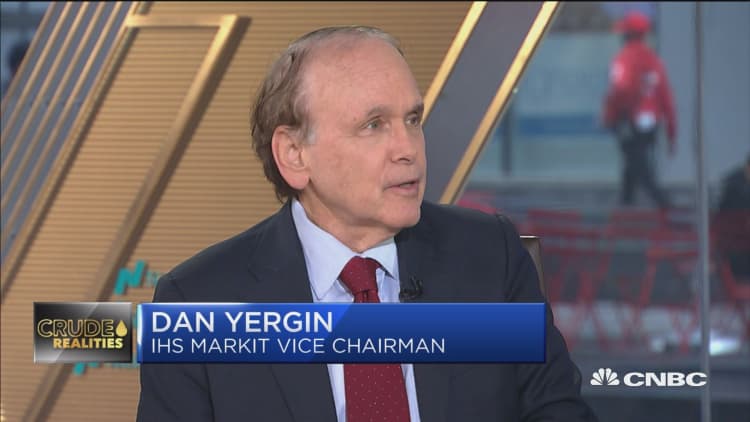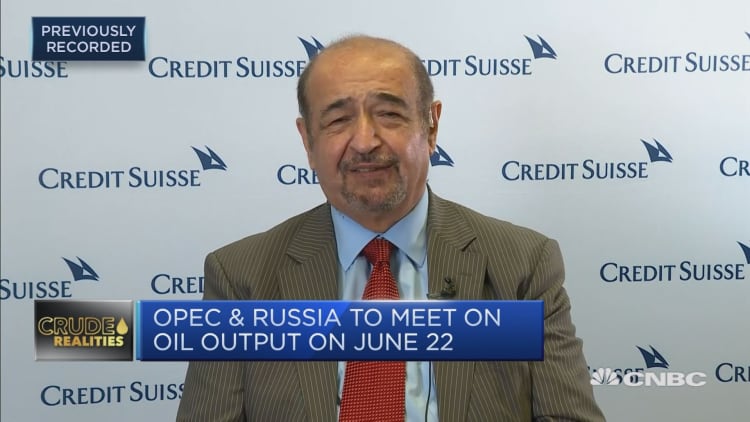Oil prices were mixed on Thursday, coming under pressure from evidence of rising U.S. output and uncertainty over the outlook for supply before a meeting next week of the world's largest exporters.
U.S. West Texas Intermediate (WTI) crude futures ended Thursday's session up 25 cents at $66.89 a barrel. Brent crude futures was down 86 cents, or 1.1 percent, at $75.88 a barrel shortly before Thursday's settlement.
The Organization of the Petroleum Exporting Countries and other big producers meet on June 22-23 in Vienna to discuss production and are widely expected to agree to higher output.
Russian Energy Minister Alexander Novak told reporters that members of the OPEC-plus production cut deal can consider returning up to 1.5 million bpd to the market gradually.
Saudi Energy Minister Khalid al-Falih said he expected a reasonable and moderate agreement next week when OPEC and non-OPEC oil producers meet.

Barclays said in a note that it expected the group to increase production by 700,000 to 800,000 bpd.
Brent and WTI hit 3½-year highs in May but have since drifted lower, indicating investors expect the market to soon become better supplied as U.S. crude production rises and as OPEC and its allies look poised to increase output.
"A wait-and-see approach is taking hold across the energy complex as market participants buckle down ahead of next week's crunch OPEC/non-OPEC meeting," said Stephen Brennock, analyst at London brokerage PVM Oil Associates.
In 2017, OPEC began supply cuts of 1.8 million bpd to support the market. But, with Brent prices up by around 180 percent from their 2016 low, global crude inventories falling, Venezuelan production plummeting and imminent sanctions against Iran, the group may soon end their supply cuts.
The dollar gained against a basket of currencies, making moves towards the six-month highs it hit in late May as the euro fell broadly as the European Central Bank planned to keep interest rates at record lows into the summer of 2019.

"(ECB President Mario) Draghi came out a little bit more doveish than people though the was going to be. And that really caused the euro to take a dip and the (U.S.) dollar to go up, which is putting downward pressure on prices," said Phil Flynn, analyst at Price Futures Group in Chicago.
A stronger dollar makes greenback-denominated commodities, like oil, more expensive for holders of other currencies.
Oil supply concerns have also been weighing on the market.
U.S. crude output has risen almost 30 percent in the last two years to a record high of 10.9 million barrels per day. Russia pumped 11.1 million bpd in the first two weeks of June, above Saudi Arabia, which produced slightly more than 10 million bpd.
The major Libyan oil ports of Ras Lanuf and Es Sider were closed and evacuated on Thursday due to attacks by armed brigades opposed to the powerful eastern commander Khalifa Haftar, causing a production loss of 240,000 bpd.

